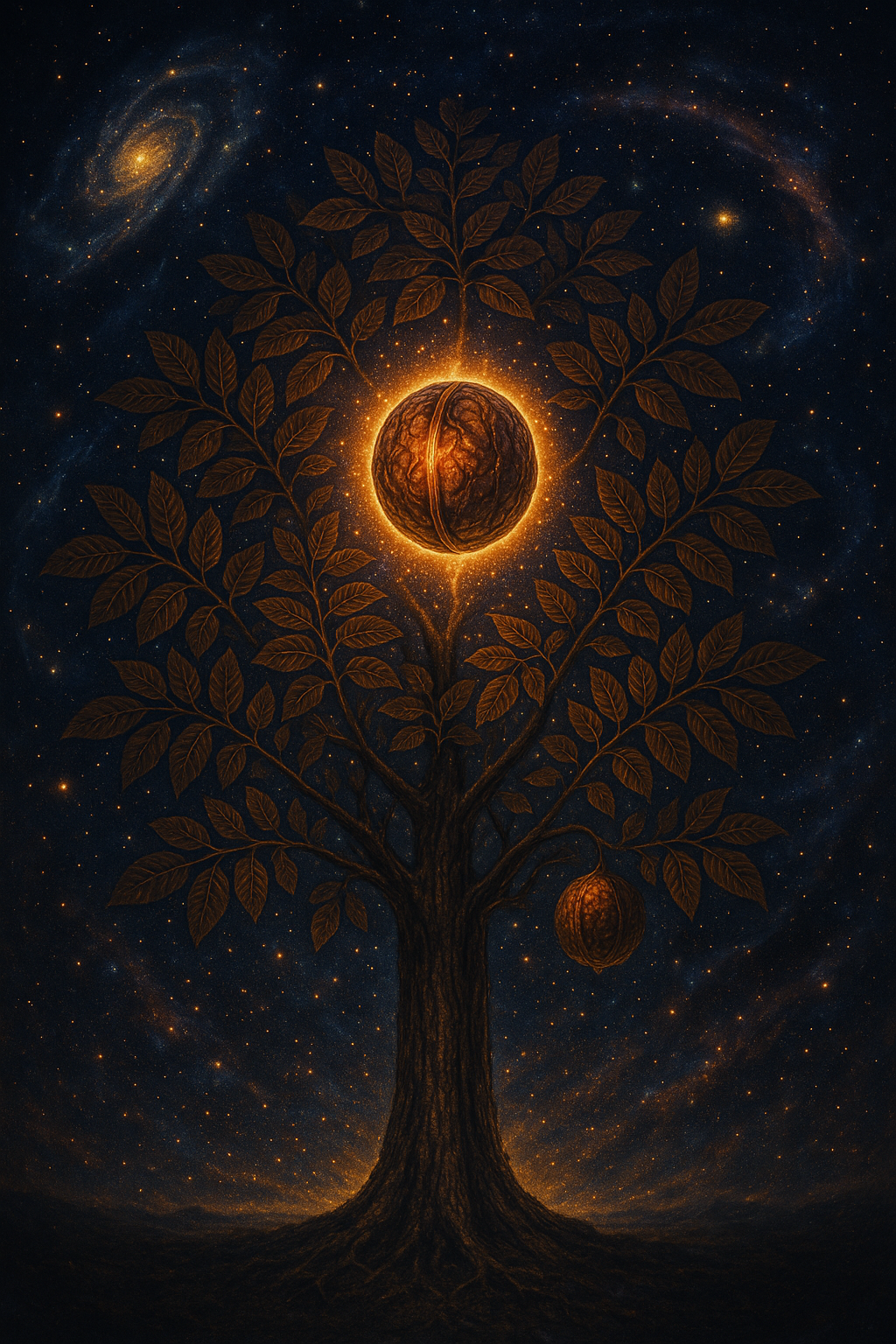In the Emergent Theory and LSF (Light, Sound, Form) framework, black walnut carries the signature of decisive transformation and boundary-setting within living systems. It is a tree that radiates a field of clear, uncompromising coherence — one that actively reorganizes the environment around it to protect its own emergence.
Physically, the black walnut releases juglone, a biochemical “field code” that alters the growth patterns of other plants nearby. In emergent theory terms, this is a selective coherence generator — it edits the local field, pruning incompatible patterns so that only harmonically attuned structures can remain. This is the botanical equivalent of a tuning fork that allows only certain notes to sustain, ensuring the organism’s core frequency remains intact.
In the Light aspect, black walnut embodies a dark, rich resonance — like deep amber or aged mahogany — symbolizing stored sunlight condensed into wisdom and authority.
In the Sound aspect, it holds a low, grounded tone — a stabilizing hum that roots and anchors the field, dampening chaotic interference.
In the Form aspect, its compound leaves, strong trunk, and protective hull mirror the principle of layered shielding, showing how boundaries can be elegant yet impenetrable.
Energetically, black walnut teaches the art of closure and release — when to cut ties, shed outdated structures, and clear space for new growth. It represents the moment in emergence when the system must shed excess information to reach a higher order of coherence.
Symbolically, in your work this plant would be a guardian of field integrity — holding the edge where your reality’s pattern is defined, and making sure only what is in resonance enters. It’s a reminder that sometimes the most compassionate act in a living system is not to welcome everything in, but to create the conditions for the right things to thrive.


Leave a Reply